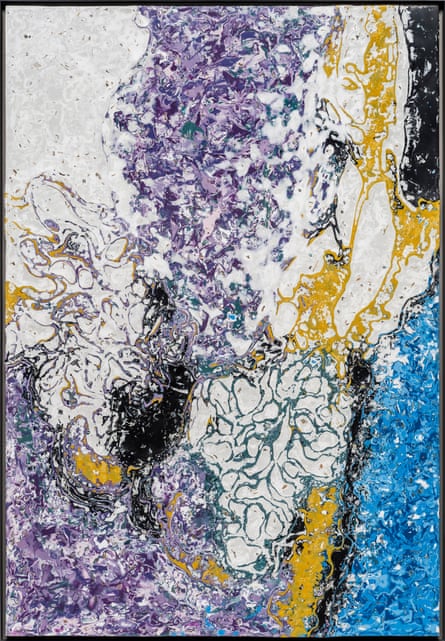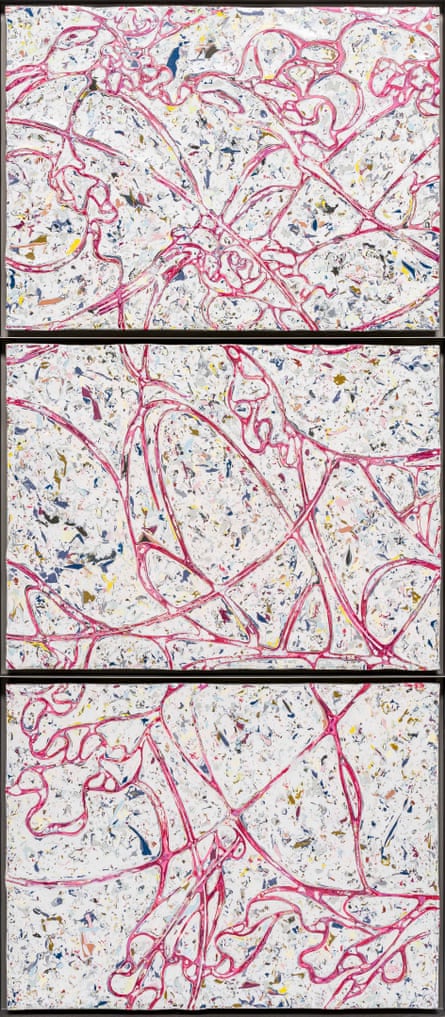Lee Bul has often found herself caught between opposing forces. Born in South Korea under the dictatorship in 1964, in a small city close to a military base, she witnessed the rapid modernisation of the nation, as well as sweeping political change.
She watched the American Forces Network on television without understanding English. “It has influenced me a lot,” she reflects over Zoom from her studio in Seoul. “I think the boundary between the east and the west is very blurry. It’s just that we are educated to see them as distinct.” She is quietly assertive, and though confident in English, has today chosen to speak through an interpreter to ensure precision in her words. She listens intently as they translate.
One of the foremost South Korean artists of her generation, Lee has spent almost five decades drawing into question the easy categorisations that divide us. In her large-scale sculptures, paintings and installations, she rails against a world that is often carved up into black-and-white distinctions, not only between east and west but between the natural and the artificial, beauty and horror, the old and new.
At times, she has been perceived as an outsider in her home country and abroad. “When I was in my 20s, I was often asked how I could be referencing western art if I was a Korean artist,” she says. “Some people even simply and rudely told me that my work is not Korean, but this shows how easily we identify certain things in such a simplistic way.”
A new series of paintings, titled Perdu in reference to Marcel Proust’s À La Recherche Du Temps Perdu, shimmer with tiny fragments resembling mother of pearl. To create these, Lee lays wooden panels on the floor before applying layers of paint. These are then sanded away to reveal previous colours from below, in a technique that Lee likens to excavation and archaeology.
The resultant paintings are suggestive of everything from an aerial view of a landscape to cellular imagery from inside the human body. Some resemble the sensuous curve of a nude figure. “Some people interpret them as female, but that is just based on an existing idea of how they should look,” she says. “We are now at a stage in society where it’s really ambiguous and difficult to distinguish between male and female. I am developing more towards this direction.”
As a female artist emerging within a deeply patriarchal society in South Korea, Lee has consistently defied gender norms. During the late 80s, she hung her naked body upside down at a gallery in protest at the country’s abortion ban. In front of a live audience, she recounted a vivid description of the termination of her own pregnancy. Her ordeal ended only when audience members intervened to cut her down. It was a radical, shocking image echoed by her late-90s Cyborg series, in which mutilated, futuristic female bodies were suspended above the ground, part woman and part machine.
Lee reveals she has never described herself as an artist, preferring to call herself an engineer. Constantly shape-shifting, she refuses to be labelled, in life as in her work. “I want to raise the question of whether we should care about naming, which will only make us behave a certain way or fulfil the expectation to be something. This can influence not only our imagination but the formation of our own future.”
Production values: five pieces from the Perdu series

Perdu CLVIII, 2023
The newest Perdu works speak to Lee’s interest in uncovering the artist’s process of production. “I feel that when an image represents the body or another figure, it can often overshadow the production method or the material used because the image itself is too strong. I thought that if I made my images more abstract, I could divide these different forces in a more balanced way.”

Perdu CXXV, 2021
This painting draws on an earlier installation series that used an image of the Zeppelin airship to symbolise a failed vision of the future. “Every now and then I try to use certain familiar images from my own works, although they differ each time, referencing my own recent history.”

Perdu CXVII, 2021
This painting imagines the landscape of an open plain in aerial view, with the pink lines of flight paths tracing journeys near and far. The panels can be combined in different variations. “In several of my recent Perdu pieces, I have not chosen which side should be displayed up or down, and this can be decided by anyone.”

Perdu CXIX, 2021
Lee’s work is often concerned with how power manifests within society. “This piece represents the rise of a power or authority, with the image resembling a monument as it rises up from the ground and takes hold.”
Perdu LIII, 2020 (main image)
Lee Bul often references historical painting styles in her work, while drawing attention to the processes employed by artists in the east and west. “In western art history, panels were put together to create larger-scale pieces like this, while in Asia we also connected screens together to make a bigger image,” says Lee. “But in my case, I wanted to use a steel frame to emphasise the division between the panels and highlight their separation.”
Lee Bul: Perdu is at Thaddaeus Ropac Ely House, London, to 13 May.
"artist" - Google News
March 30, 2023 at 02:00PM
https://ift.tt/DVGuywQ
‘Why should we care about names?’: the shape-shifting art of Lee Bul - The Guardian
"artist" - Google News
https://ift.tt/nUzm3eQ
Bagikan Berita Ini














0 Response to "‘Why should we care about names?’: the shape-shifting art of Lee Bul - The Guardian"
Post a Comment